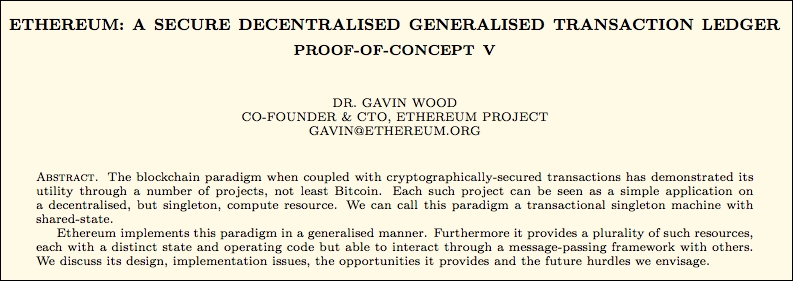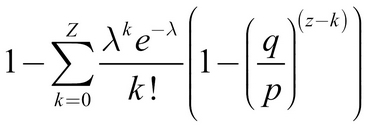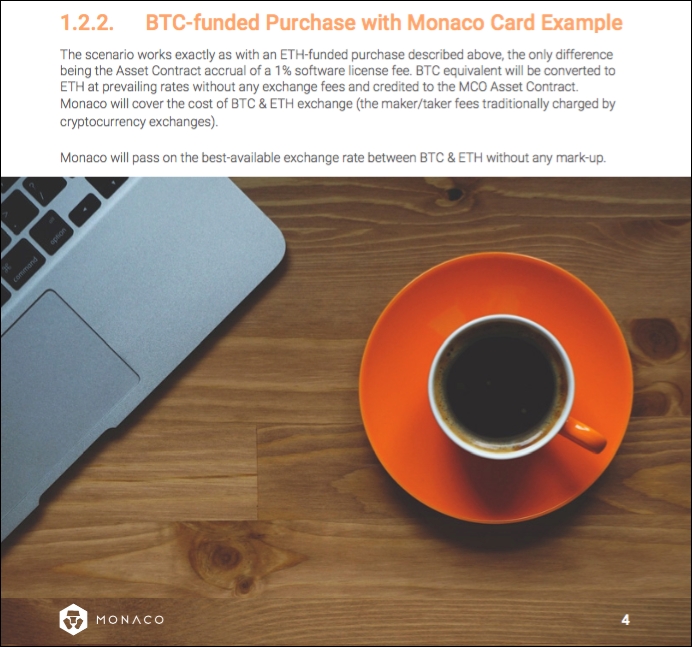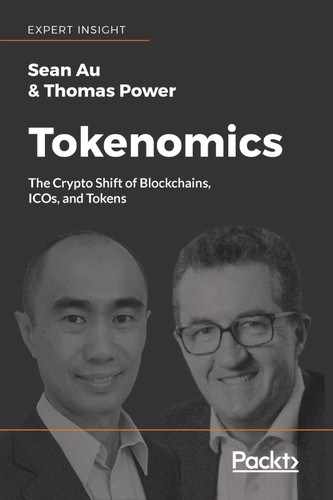There are lots of ingredients that go into a nicely baked ICO, but arguably the most important are the white paper, the website, and the team. The white paper has continued to evolve from a very academic-style paper, to in some cases a marketing brochure, but regardless of its form, it continues to be, for better or worse, the standard "must-have" document that all ICOs need to produce.
A white paper communicates a lot of things, but the main concept is an idea. The next step is to create a website because it is almost inconceivable in this day and age for a business or brand of any sort not to have an online presence. A website is also used to collect the funds for the ICO.
Once visitors land on an ICO's website, one of the most popular pages to browse is the "team" page or "about us." Who are the people behind this idea? Are they respected individuals in the field? Are they academics or celebrities?
In this chapter, we will take a closer look at the white paper, the website, and the team. It should be of no surprise that writing continues to be the best form of communicating detailed information at scale. Videos are great for a quick introduction or ELI5 (Explain Like I'm 5), but nothing beats a well-written document.
If you believe Wikipedia, the term "white paper" originated from the British Government, with many pointing to the Churchill white paper of 1922 as the earliest well-known example (https://en.wikipedia.org/wiki/Churchill_White_Paper). Some say that white papers developed from blue papers, but since the material was too light, they were published with a white cover instead. (http://klariti.com/white-papers/origin-of-white-papers/).
A white paper can be thought of as a persuasive essay that uses facts and logic to promote a certain product, service, or viewpoint, or an authoritative, in-depth report on a specific topic that presents a problem and provides a solution.
The actual definition varies widely from industry to industry, but in technology, a white paper usually describes a theory behind a new piece of technology.
Etymology: Although it seems that the white paper is more commonly written with a space between, as in "white paper", there is no right or wrong way. The same comparison can be made between the words "block chain" and "blockchain." In fact, in the original bitcoin white paper, the word "block" was mentioned 67 times and the word "chain" 27 times, and the closest mention of the two words together was "blocks are chained," "block in the chain," or "chain of blocks." Now, however, the word "block chain" is more widely known as "blockchain." Other similar references are "web site", now more commonly written as "website" and "e-mail" as "email."
The bitcoin white paper is the most famous white paper example, but what is fascinating is that Satoshi Nakamoto didn't call it a "white paper." On Feb 11, 2009, Satoshi called it a "design paper":
"I've developed a new open source P2P e-cash system called bitcoin. It's completely decentralized, with no central server or trusted parties, because everything is based on crypto proof instead of trust. Give it a try, or take a look at the screenshots and design paper."
Although white papers are the standard, other variants of colored papers also exist.
A yellow paper is a document containing research that has not yet been formally accepted or published in an academic journal. Although the original Ethereum white paper was published by Vitalik Buterin at the beginning of 2014, towards the middle of 2014 an Ethereum yellow paper was also produced by Dr. Gavin Wood, co-founder and former chief technical officer of the Ethereum project (https://ethereum.github.io/yellowpaper/paper.pdf). It is a very technical paper and is written on a dull yellow background:

Figure 1: The Ethereum yellow paper published by Dr. Gavin Wood
Grey papers or grey literature are normally provided by researchers and practitioners in a field outside of traditional commercial or academic publishing channels. Pillar Project published a "gray paper", for example (https://pillarproject.io/documents/Pillar-Gray-Paper.pdf).
Green papers typically set out discussions or proposals which are still at a formative stage. In fact, the Oxford English Dictionary defines a green paper as (in the UK) a preliminary report of government proposals published to stimulate discussion. (https://en.oxforddictionaries.com/definition/green_paper).
The Melon project produced a green paper outlining its blockchain protocol for digital asset management, and Holo also created a green paper describing an ecosystem that relies on hosts to provide processing and storage for distributed applications, while earning redeemable credits (https://github.com/melonproject/paper/blob/master/melonprotocol.pdf):

Figure 2: The Melon project produced a green paper
With some white papers reaching 40-to-50 pages in length, light papers started appearing, which were a more concise or sometimes simplified version, usually less than 10 pages long. KodakOne, SwarmFund, Polkadot, and many other ICOs produced light papers.
Buterin created a mauve paper (https://cdn.hackaday.io/files/10879465447136/Mauve%20Paper%20Vitalik.pdf) in 2016 that was inspired by a Dilbert (https://www.youtube.com/watch?v=bSdwqa3Yl0Q) comic, playing on the fact that when "blockchain" became a buzzword, everyone wanted one, even though many had no idea what one was. The paper covered advanced topics, such as increasing scalability, ensuring economic finality, and improving computational censorship resistance.
The original Dilbert cartoon was in reference to when SQL databases were the "in thing" in 1995 and Dilbert's boss "Pointy-haired Boss" said to Dilbert, "I think we should build an SQL database."
Dilbert replied, "What color do you want that database?"
"I think mauve has the most RAM," was the boss' reply.
A modified version was created and circulated on Twitter (https://twitter.com/jimharris/status/950045005774692354), where the conversation was altered to the boss saying, "I think we should build a blockchain."
Dilbert replied, "What color do you want the blockchain?"
"I think mauve has the most RAM," was the response from the boss.
The joke was that it makes absolutely no sense to talk about "colors" of a blockchain or one blockchain having more RAM than another. In the cartoon, Dilbert's manager saw the term somewhere but doesn't understand what it actually means and Dilbert suspects that and asks a question to confirm that suspicion.
Regardless of the nomenclature, white papers within the scope of ICOs have certainly evolved over time.
White papers in the early days had certain commonalities. They were very academic in nature, had an abstract, contained complicated mathematics, and various proofs, and were generally intended for a technical audience, particularly in the fields of cryptography, distributed computing, and mathematics. This was not surprising, as consensus mechanisms involving these technical concepts were at the core of the first white papers and mathematics was required when creating a lot of these protocols.
As an example, the following equation from the original bitcoin white paper demonstrates that the probability of an attacker attempting to purchase something with bitcoin and then reversing the transaction, in what is called a "double spend attack", actually decreases exponentially over time:

Figure 3: An example of the mathematics included in the bitcoin white paper
Nxt introduced a table of contents into its white paper, which was a novelty at the time but proved really useful.
The Ethereum white paper, while still technical in nature, spent the first 12 pages providing background and explaining the challenges of bitcoin and alternative blockchain applications, before explaining what Ethereum was. It was providing context and justified Ethereum's creation, addressing various limitations of the existing systems:
"The intent of Ethereum is to merge together and improve upon the concepts of scripting, altcoins, and on-chain meta-protocols, and allow developers to create arbitrary consensus-based applications that have the scalability, standardization, feature-completeness, ease of development, and interoperability offered by these different paradigms all at the same time."
In the first half of 2016, DigixDAO, a distributed autonomous organization tokenizing gold using the Ethereum blockchain, and Waves, experimented with adding color in their white papers and removed mathematical formulas. It essentially made their white papers more user-friendly to read.
DigixDAO provided numerous colored flow charts and even included a Chinese-translated version at the end of the English version, which doubled the length of the white paper to 22 pages.
Waves introduced a full-color title page in its white paper and kept details very high level. It was only 11 pages and appeared almost too simple. Information on crowdsales, however, was provided in a separate blog post.
Very quickly, ICOs discovered that if they wanted to raise more capital, the information needed to be less technical and more appealing to a wider audience. What also helped was that with these ICOs launching on existing blockchains, a lot of the technical requirements were taken care of, hence making the papers less technical by nature.
In the latter half of 2016, FirstBlood started providing information, such as project timelines, funding breakdowns, and details of its team in a 26-page white paper. FirstBlood also detailed the token sale period and the token mechanics.
Synereo, though, stuck to its guns and produced a 65-page first-generation type white paper. Synereo raised $4.7 million and FirstBlood $5.5 million, so no useful correlation can be made from comparing these two white papers.
There was definitely a shift, though, as SingularDTV, Ark, and Golem maintained the color theme, and provided details of the token supply and distribution within the document.
Humaniq's white paper was a mixture of all three generations in one. It was very academic-looking, with mathematical formulas around its token distribution, a table of contents, colored diagrams, token details, and project timelines, along with a technical section on BioID and mobile transaction details on the Ethereum network. BAT's white paper also fell into this category.
During the madness of 2017, white papers evolved very quickly. Gnosis, in one of many white papers, took things to the next level by replacing the abstract with an "executive summary" and providing a well-thought-out structure. A summary of the main headings of the Gnosis white paper are as follows:
- Executive Summary
1.1 Problem Overview
1.2 Mission Statement
1.3 Core Objectives
- Token Mechanics
- Platform Model
- Gnosis Application
- Roadmap
- Token Auction
- Leadership
- Legal Considerations
- Gnosis Architecture
Note that the Gnosis white paper has since been restructured, in the latest version dated December 22, 2017, in particular removing details on the token mechanics and auction.
Not only did white papers become more businesslike, but their length grew as well. This was greatly attributed to the legal disclaimers becoming bigger and more in-depth. MobileGo added a 10-page terms and conditions section at the end of its 32-page white paper and TenX added an 11-page disclaimer at the beginning of its 51-page white paper.
LAToken had a very clear and well-presented structure in its white paper, as follows:
- Executive Summary
- Value Proposition
- Competitive Analysis
- How It Works
- LAT Platform
- Key Asset Markets
- Crypto Market Overview
- Technology
- Tokens
- Legal Considerations
- Team
- Roadmap
Some white papers were more like marketing brochures, with fancy graphics, and they were missing a lot of key details. Monaco fell into this category, with several half-page graphics of a cup of coffee next to a laptop or a person reading a newspaper in a park. When stripped of graphics, Monaco's 32-page white paper was only 11 pages and just over 5,000 words long.

Figure 4: The Monaco white paper appeared more like a marketing brochure, with half-page meaningless graphics
As we see more and more tokens fall into the securities category, white papers will again transform and become more of an investment prospectus.
Information in a typical Initial Public Offering (IPO) investment prospectus includes:
- Company Overview
1.1 Key Management Team
1.2 Board and Governance
- The Market
2.1 Industry Overview
2.2 Marketing Strategy
- Business Activities
3.1 Business Plan/Model
- Investment Overview
- Financial Overview
- Risks
- Legal
The similarities are obvious. In fact, first-generation white papers are transforming and becoming known more as technical papers or research papers because the information they contain is often very detailed. This is something that Filecoin has done with its research, producing papers such as "Proof-of-Replication," "Power Fault Tolerance", and "Research Roadmap 2017", all in conjunction with its actual white paper.
IOTA has recently revamped its website and provided several academic papers to support its Tangle technology. Papers include The Tangle, Equilibria in the Tangle, and The first glance at the simulation of the Tangle: discrete model. The titles themselves are more than enough for the average reader to push the papers into the "too hard, I'll come back later (not really)" bucket.
Writing a white paper is not as easy as many may think. It involves explaining a novel idea to a wide-ranging audience in an easy-to-understand manner. It is also important to have a team of reviewers, quite often from different disciplines, such as legal, marketing and, of course, technical to ensure each part of the white paper is correct and accurate.
There is no standard methodology for writing a white paper, but the following presents a range of sections to include when writing one. Not every section needs to be included and the terminology can be chosen as appropriate. For example, "executive summary" has become more popular than "abstract." Some ICOs use the term "allocation", while others use "distribution" or "issuance." Some have a general "advisory board" section, whereas others split it up into more detail, such as "marketing", "technology", and "legal advisors." In essence, there is no right or wrong way:
- Executive Summary/Abstract
- Introduction
2.1 About
2.2 Vision/Mission Statement/Core Objectives
- Value Proposition
3.1 What Makes {insert token name here} Special?
- Market Overview
4.1 The Problem
4.2 Our Solution
- Business Model/Landscape
5.1 Competitive Advantage Matrix
- The Platform
6.1 How it Works
6.2 The Ecosystem
6.4 Architecture
6.4.1 Overview
6.5 Key Components & Processes
6.6 Privacy & Security
- Use Case Scenario
- Token Mechanism/Sales/Launch/Creation Event
8.1 Token Allocation/Distribution/Issuance
8.2 Token Sales, Structure, and Timeline
8.3 Use of Funds/Proceeds
8.4 Token Emission Model
8.5 Counterparty/Adoption
8.6 Token Sales Contract and Audit
- Roadmap
9.1 Development Roadmap
9.2 Phase 0: Testnet Deployment
9.3 Phase 1: Mainnet Deployment
9.4 Ongoing Research
- Financials
10.1 Conservative
10.2 Optimistic
- Team
11.1 Founders
11.2 Core Team
11.3 Advisory Board
11.3.1 Marketing Advisors
11.3.2 Technology Advisors
11.3.3 Legal Advisors
11.3.4 Blockchain Advisors
11.4 Partners
- Legal
12.1 Legal Structure
12.2 General Regulatory Structure
12.3 Approach in {insert jurisdiction here}
- Risks
- FAQs
- Conclusion/Summary
